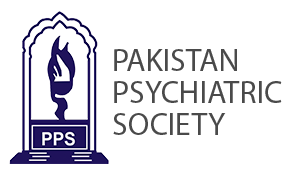EXPLORING THE ASSOCIATION OF MEANING IN LIFE WITH PSYCHOLOGICAL DISTRESS IN MALE PATIENTS WITH SUBSTANCE USE DISORDER IN PAKISTAN
Abstract
The objective of the present research is to explore the predictive association of meaning in life (presence & search) with psychological distress (depression, anxiety & stress) in people with substance use disorder. Sample of the present study comprised 200 Muslim participants (male patients with substance use disorder), ages ranging from 18 to 45 years (M =18; SD =6.55). The sample was recruited from different substance use treatment and rehabilitation centers situated in different areas of Karachi, through purposive sampling. Instruments used in this study were the Personal Information Form, Meaning in Life Questionnaire (MLQ; Stegaer, et al., 2006), and Depression Anxiety and Stress Scale (DASS; Lovibond, & Lovibond, 1995). Regression analysis shows a significant predictive relationship of meaning in life (i.e., presence & search of the meaning) with depression (adj R2=.988, F (2, 198) =8278.46, P < .0001(, anxiety (adj R2=.943, F (2, 198) =1659.82, P < .0001(, stress (adj R2=.982, F (2, 198) =5390.78, P < .0001(. Overall findings revealed that meaning in life is a significant predictor of psychological distress (i.e., depression, anxiety & stress) in people with SUD. The finding and implications are discussed in detail.
Keywords: Meaning in life, presence, search, depression, anxiety, stress, substance use disorder
Downloads
References
Azad, N., Gondal, M., & Abbas, N. (2008).Frequency of depression and anxiety in patients attending a rheumatology clinic. Journal College Physicians Surgery Pakistan, 18(9), 569-573.
Cohen, G. L., & Sherman, D. K. (2014). The psychology of change: Self-affirmation and social psychological intervention. Annual review of psychology, 65, 333-371.
De Klerk, et al., (2009). No clear association between female hormonal aspects and osteoarthritis of the hand, hip and knee: a systematic review. Rheumatology, 48(9), 1160-1165.
Demirbaş-Çelik, N., &Keklik, İ. (2019). Personality factors and meaning in life: The mediating role of competence, relatedness and autonomy. Journal of Happiness Studies, 20(4), 995-1013.
Diener, E., Lucas, R. E., &Oishi, S. (2002). Subjective well-being: The science of happiness and life satisfaction. Handbook of positive psychology, 2, 63-73.
Emmons, R. A., & Paloutzian, R. F. (2003). The psychology of religion. Annual review of psychology, 54(1), 377-402.
French, M. T., Zarkin, G. A., McGeary, K. A., &McLellan, A. T. (1997). A structured instrument for estimating the economic cost of drug abuse treatment: The Drug Abuse Treatment Cost Analysis Program (DATCAP). Journal of Substance Abuse Treatment, 14(5), 445-455.
Gartner, J. (1996). Religious commitment, mental health, and pro-social behavior: A review of the empirical literature. Human–behavior Interaction, 11(3), 187-214.
Grouden, M. E., Jose, P. E. (2014). How do sources of meaning in life vary according to demographic factors? New Zealand Journal of Psychology,43(3),29-38.
Halama, P., &Bakosova, K. (2009). Meaning in life as a moderator of the relationship between perceived stress and coping. Studies psychological, 51(3), 143.
Harlow, L. L., Newcomb, M. D., & Bentler, P. M. (1986). Depression, self‐derogation, substance use, and suicide ideation: Lack of purpose in life as a mediational factor. Journal of clinical psychology, 42(1), 5-21.
Joshi, S., Kumari, S., & Jain, M. (2008). Religious belief and its relation to psychological well-being. Journal of the Indian Academy of Applied Psychology, 34(2), 345-354.
Melton, A. M., &Schulenberg, S. E. (2008). On the measurement of meaning: Logotherapy's empirical contributions to humanistic psychology. The Humanistic Psychologist, 36(1), 31-44.
Oman, D., & Thoresen, C. E. (2005). Do religion and spirituality influence health? Handbook of the psychology of religion and spirituality,24, 435-459.
Rathi, N., & Rastogi, R. (2007). Meaning in life and psychological well-being in pre-adolescents and adolescents. Journal of the Indian Academy of Applied Psychology, 33(1), 31-38.
Reker, G. T., & Wong, P. T. P. (1988). Aging as an individual process: Toward a theory of personal meaning. In J. E. Birren & V. L. Bengtson (Eds.), Emergent theories of aging (pp. 214-246). New York, NY: Springer
Santrock, J. W. (2003). Adolescence. New York: McGraw-Hill
Schulenberg, S. E., Schnetzer, L. W., & Buchanan, E. M. (2011). The Purpose in Life test – Short Form: Development and psychometric support. Journal of Happiness Studies, 12, 861-876. doi:10.1007/s10902-010-9231-9
Shao, et al., (2018). Parent Child Cohesion, Basic Psychological Needs Satisfaction, and Emotional Adaptation in Left-Behind Children in China: An Indirect Effects Model. Frontiers in Psychology, 9, 1023- 1078.
Steger, M. F., Frazier, P., Oishi, S., & Kaler, M. (2006). The meaning in life questionnaire: Assessing the presence of and search for meaning in life. Journal of counseling psychology, 53(1), 80-88.
Underwood, L. G., & Teresi, J. A. (2002). The daily spiritual experience scale: Development, theoretical description, reliability, exploratory factor analysis, and preliminary construct validity using health-related data. Annals of Behavioral Medicine, 24(1), 22-33.
Zika, S., & Chamberlain, K. (1992). On the relation between meaning in life and psychological wellbeing. British journal of psychology, 83(2), 133-145.
Copyright © JPPS. Published by Pakistan Psychiatric Society
Licensing: This work is licensed under Creative Commons Attribution-NonCommercial 4.0 International License
Readers may “Share-copy and redistribute the material in any medium or format” and “Adapt-remix, transform, and build upon the material”. The readers must give appropriate credit to the source of the material and indicate if changes were made to the material. Readers may not use the material for commercial purposes. The readers may not apply legal terms or technological measures that legally restrict others from doing anything the license permits.






.png)









